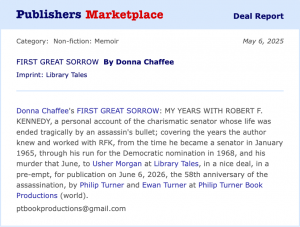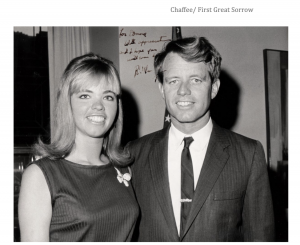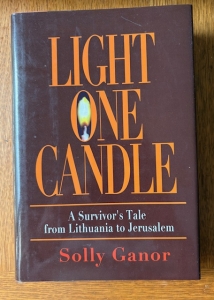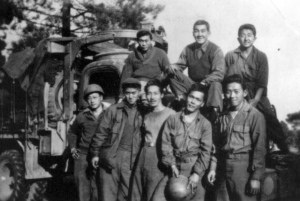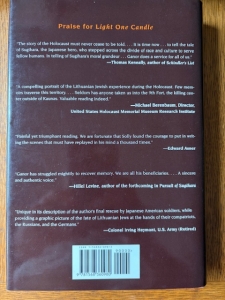Excitedly Anticipating Publication of “Devouring Time: Jim Harrison, a Writer’s Life” by Todd Goddard
May 27 2025 update:
For fans of Jim Harrison eager to have their copy of Devouring Time: Jim Harrison, a Writer’s Life as soon as possible upon publication November 4, 2025, please click through to the websites of major book retailers below, using the pre-order/buy buttons provided:
1) Bookshop.org/for pre-ordering Devouring Time (Bookshop is an online bookseller whose sales support many independent bookstores) 2) Barnes & Noble/for pre-ordering Devouring Time 3) Books-A-Million/for pre-ordering Devouring Time 4) Amazon
—–
May 22, 2025
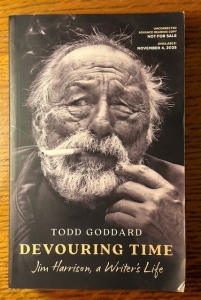 As reported on this website in April 2020, for our author client Todd Goddard, Philip Turner Book Productions sold Devouring Time: Jim Harrison, a Writer’s Life to Blackstone Publishing. Due to the pandemic, a number of key archives were inaccessible for 2-3 years but the author persevered and his book, the first biography of the protean American writer—beloved to readers for his poetry, many novellas, full-length novels, and essays that covered the gamut from food to fishing to foreign locales—will be published in hardcover, ebook, and as an audiobook on November 4, 2025. You can see the cover image from the advanced reading copy (ARC) that is being distributed to bookstores, book critics, and literary journalists, and the back cover copy.
As reported on this website in April 2020, for our author client Todd Goddard, Philip Turner Book Productions sold Devouring Time: Jim Harrison, a Writer’s Life to Blackstone Publishing. Due to the pandemic, a number of key archives were inaccessible for 2-3 years but the author persevered and his book, the first biography of the protean American writer—beloved to readers for his poetry, many novellas, full-length novels, and essays that covered the gamut from food to fishing to foreign locales—will be published in hardcover, ebook, and as an audiobook on November 4, 2025. You can see the cover image from the advanced reading copy (ARC) that is being distributed to bookstores, book critics, and literary journalists, and the back cover copy.
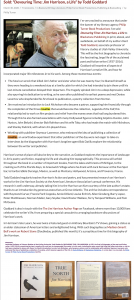
Things are setting up very well for the book, with this enthusiastic blurb already received from the author and activist Rebecca Solnit, who writes that,
“Jim Harrison was a mustang that never got corralled, or at least broke out of all the paddocks he found himself in, and Todd Goddard tells the story of this bon vivant, outdoorsman, hellion, and great poet from his ancestors to his end with grace, momentum, generosity, and insight. I was more than glad to go on the journey that was Harrison’s life in Devouring Time’s narrative, and what a great American life it was, wreckage, glory, gifts, and all”— Rebecca Solnit, author of Orwell’s Roses
The biography of Jim Harrison (1937-2016) unfolds across a number of key places, from the lakes and forests of Michigan, his home state, to the Florida Keys, to Greenwich Village, to Durango, Mexico, as well as Montana, Hollywood, Arizona, and Provence, France. In the archives, Todd Goddard found a rich record of correspondence, including many letters with Raymond Carver, Francis Ford Coppola, Annie Dillard, Louise Erdrich, Allen Ginsberg, Barry Lopez, Peter Matthiessen, Norman Mailer, Gary Snyder, David Foster Wallace, Terry Tempest Williams, and Tom McGuane. Goddard is an associate professor of literary studies at Utah Valley University, has taught Harrison’s fiction and poetry, and presented research on Harrison’s works for the Jim Harrison Society at the American Literature Association’s annual conference.
We have some ARCs available, so let me know, if you or someone you know—a bookseller say, or a reviewer—wants one because of the sort of books they read, carry, and write about, including Harrison’s own poetry, essays, and novellas, the latter being a form he excelled at beyond any fiction writer of his era.
This week, Harrison’s classic 1989 poetry collection, The Theory and Practice of Rivers, has been reissued in a new edition from his longtime poetry publisher, Copper Canyon Press. In advance of that, Todd Goddard, Rebecca Solnit, and Jamie Harrison, one of Jim’s daughters, took part in an online discussion of the book with Copper Canyon publisher Joseph Bednarik. In addition, Copper Canyon printed a sweet little broadside for The Theory and Practice of Rivers, which I was delighted to receive in the mail, as shown in the photo gallery below. The republication of The Theory and Practice of Rivers is timely in that it happens to coincide with the publication this week of Is a River Alive? by another of my favorite writers on nature and landscape, Robert Macfarlane. Taken together the two books are sure to bring renewed attention to our riverine world.
And if you’re looking to join an online community of folks who treasure Jim Harrison’s work, I suggest you can join the Jim Harrison Author Page on Facebook, where I appreciate that this post is being widely shared.
All in all, it’s shaping up to be a banner year for the indomitable Jim Harrison!




